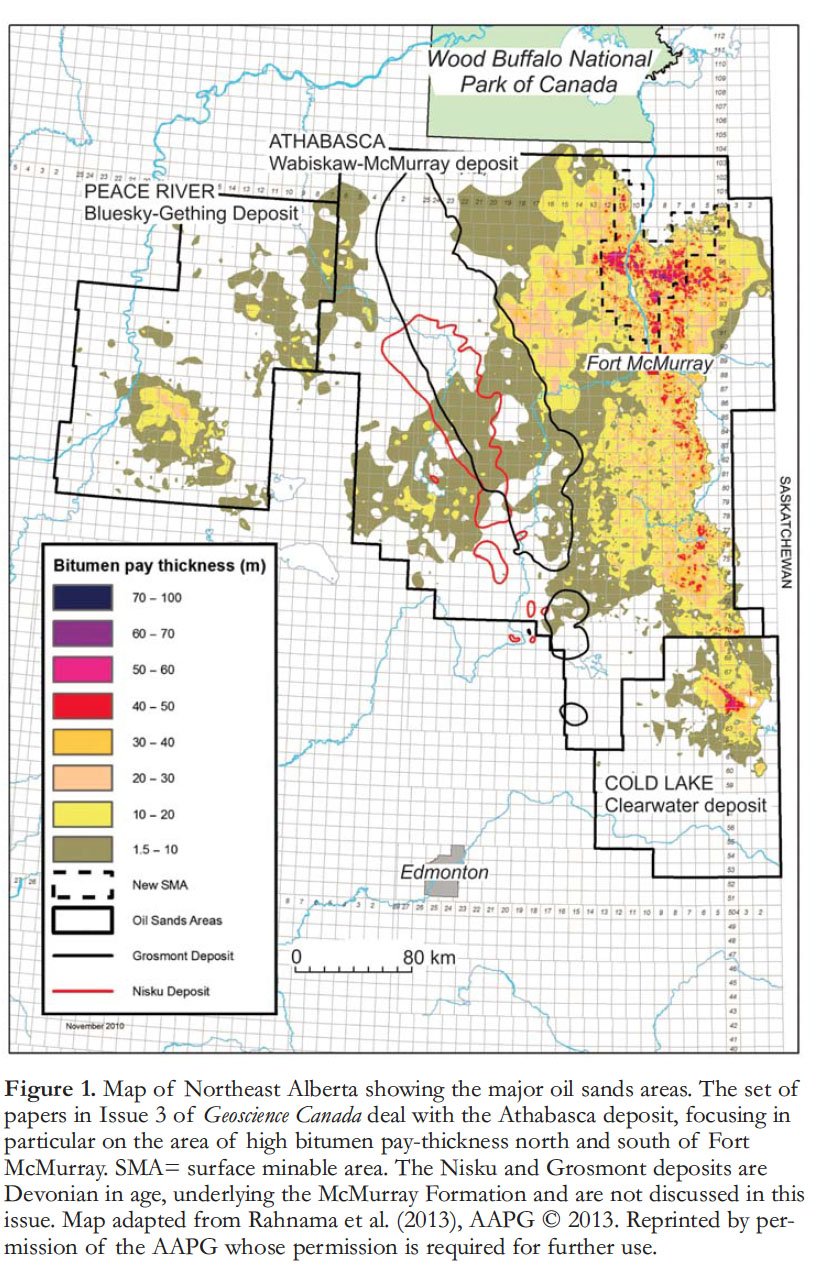Special Issue
Environmental Management of the Alberta Oil Sands:
Introduction to the Special Set of Articles
1 The surface and subsurface extraction of bitumen from the oil sands (otherwise known as tar sands) of northern Alberta have created what is probably the largest single set of environmental issues to arise in recent Canadian history. While there has been much media attention to these issues, there has been very little available in the way of informed opinion regarding the seriousness of the environmental impact and what should be done about it. Detailed technical studies buried in government grey literature and specialized journals are not widely accessible to the general public, whereas reports, news releases and websites maintained by environmental NGOs, which are designed to capture attention, are not subject to the normal rigors of peer-review, and have not, with a few exceptions, advanced real public understanding of the environmental issues. The set of articles in Issue 3 of Geoscience Canada is designed to fill the gap in two ways. Two articles deal with the historical background of environmental activity by governments and the wider community, and three articles summarize the technical issues relating to pollution in the air, surface waters and groundwater. The focus in all of these articles is exclusively on the oil sands of the Lower Athabasca region, where the main industrial activity has taken place to date (Fig. 1).
 Display large image of Figure 1
Display large image of Figure 12 Active exploitation of the Alberta Oil Sands commenced in the late 1960s, and concerns about the environmental effects that mining and subsurface extraction could generate, date from that beginning nearly fifty years ago. These concerns and the response of governments, the corporate sector, First Nations, and others through this period, are described in the first article in this series by Ron Wallace (2013), an aquatic ecologist with more than thirty years of experience working on environmental problems on behalf of the governments of Alberta and the Northwest Territories. He is currently serving as Vice-Chair of the Alberta Environmental Management Board.
3 In 2010 environmental protests about the presumed environmental effects of oil sands extraction, coinciding with the appearance of the second of two key papers on pollution in the Lower Athabasca System by David Schindler’s research group at University of Alberta (Kelly et al. 2010), led to a climax of public concerns. The governments of Alberta and Canada established a series of advisory panels to explore the environmental issues and make recommendations. At about the same time an expert panel was established by the Royal Society of Canada under the leadership of Steve Hrudy of the School of Public Health at the University of Alberta. These events are described in the second article, which takes the narrative from 2010 to mid-2013 (Miall 2013a). As a member of both the federal Oil Sands Science Advisory Panel in 2010 and the Alberta Environmental Monitoring Panel in 2011, I was privileged to be close to some of the crucial developments during this period.
4 Three technical articles in this set then deal with the specifics of air and water pollution. As demonstrated by the two key papers in 2009 and 2010 (Kelly et al. 2009, 2010) pollution enters the environment of the Lower Athabasca System by aerial transmission from the industrial plant in the mineable area of the oil sands in the vicinity of Fort McMurray. The first of the three articles documents in detail the work being carried out to document air pollution. The article was written by Kevin Percy (2013), the chief scientist with the Wood Buffalo Environmental Association, the multi-stakeholder organization charged with the responsibility for assessing air quality issues in the Fort McMurray region. This article is then followed by a summary of surface-water issues by David Schindler (2013), and the set is completed by a review of the environmental hydrogeology of the groundwater systems by A. D. Miall (2013b).